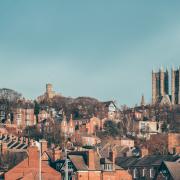Stargazer Richard Darn shines light on the sky at night above Yorkshire

We all get our relaxation in different ways and for me it is being in a remote corner of Yorkshire under a starry sky, with the owls hooting and stars glinting - it is utterly beguiling.
If your only experience of the night sky is a quick glance up whilst discarding the rubbish then you are missing a treat. You don’t have to wait too long before a star-like object scuttles across the sky, which could be a lump of space rock or a spy satellite, and you might even see a shooting star – a tiny bit of space debris burning up in the atmosphere. If you are extremely lucky, a bigger meteor called a fireball might turn night into day for a second as once happened to me in the North York Moors. Magical.
We are fortunate in Yorkshire. The west and south of the county are light polluted, meaning we see only a handful of stars, but the national parks and other rural areas retain a sense of celestial wonder. The northern Dales are super dark, whilst the Moors’ loveliest skies are near the coast. Expect to see 2,000 stars, the Milky Way and even the Northern Lights on rare occasions.
But don’t worry if you live in an urban area. Famous winter constellations like Orion can still be seen, with its hourglass shape hanging like a sentinel above the southern horizon by mid-evening during early winter. In Greek tradition it depicts a hunter with a sword belt, sheath and bow, and is notable for its top left hand star, Betelgeuse. Red in colour it is on its last legs and could explode at any time!
Orion is packed with wonders, like a gas cloud secreted in the sword sheath and visible in binoculars as a hazy glow. It is also a great signpost to other parts of the sky. Draw a line from its three central belt stars upwards and you’ll encounter a V shape constellation on its side – this is Taurus. Extend the line a little further and you find an exquisite tear-shaped cluster of stars. This is the Pleiades or Seven Sisters, although the Japanese refer to it as Subaru (guess what features on the car maker’s badge!). Ponder on the fact the starlight has taken nearly 450 years to reach your eye and see how many stars you can count.
Drawing a line down from Orion’s belt leads you to the brightest star in the northern sky, Sirius. It never gets very high from Yorkshire, but it catches the eye both for its brilliance and the fact that it twinkles madly. This has nothing to do with the star itself, but is caused by the Earth’s turbulent atmosphere.
Whilst you will see more stars from the country, some things look just as good from the city. Which is a good way of flagging up a wonderful event visible across our region. On January 21st we will experience a total lunar eclipse, when the earth comes between the sun and the moon to render the latter a blood red colour. The effect is due to sunlight seeping through the earth’s atmosphere and reddening as it does so, before being projected onto the cratered surface. The Vikings thought this was caused by wolves chasing and eating the moon and I’ll be heading to Roseberry Topping to view the spectacle. It was dubbed Odin’s Hill by Norse incomers. The only fly in the ointment is that this event reaches its climax between 4.40am and 5.45am! But this is by far the best lunar eclipse we will see in Yorkshire for 10 years - so set your alarm clock!



























